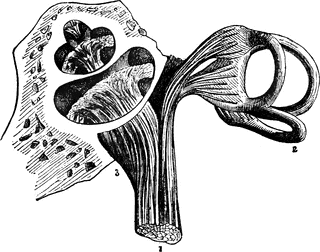

“The surgeon who installs the device would inject the DNA solution into the cochlea and then fire electrical impulses to trigger the DNA transfer once the implant is inserted,” explains Jeremy Pinyon, first author of the study. But they point out that auditory nerve changes could be maintained by the ongoing neural activity that the cochlear implant provides.įurthermore, the investigators say that the technique would only add a few minutes to future cochlear implant procedures. The team says that after using the novel technique for 2 months, neurotrophin production reduced.

The researchers explain their findings further in the video below: Ultimately, we hope that after further research, people who depend on cochlear implant devices will be able to enjoy a broader dynamic and tonal range of sound, which is particularly important for our sense of the auditory world around us and for music appreciation.” “People with cochlear implants do well with understanding speech, but their perception of pitch can be poor, so they often miss out on the joy of music. Gary Housley, of the Translational Neuroscience Facility at UNSW, adds: Jim Patrick, chief scientist and senior vice president of Cochlear Limited, who helped fund the study, says the team’s discovery has important implications for the future of cochlear implants and the 324,000 people worldwide who have received them so far. These cells were then able to produce neurotrophins, therefore triggering regeneration of auditory nerves. In their study, the researchers were able to use electrical pulses delivered from the cochlear implants to send a DNA solution to cells close to the implanted electrodes.

Any sounds that these pick up are changed into electrical signals that are sent to the electrodes, which stimulate the auditory nerves and send signals to the brain. The external part consists of a microphone and speech processor. The internal part is made up of a transmitter that is implanted into the mastoid bone behind the ear, with electrodes inserted into the cochlea – the auditory part of the inner ear. The implant consists of an internal and external part. Image credit: UNSWĪ cochlear implant is a surgically implanted electronic device that can improve a person’s ability to hear and understand speech. Share on Pinterest The top picture shows auditory nerves after regeneration using the cochlear implant technique, while the bottom picture shows the nerves previously. With this in mind, they looked at whether cochlear implants could be used for gene therapy. The team says that it has not been possible to localize delivery of neurotrophins to the cochlea safely using drug delivery or viral-based gene therapy. However, carrying out such a technique has proven difficult for scientists. The researchers say it is well known that if neurotrophins – naturally occurring proteins important for neuron development, function and survival – are delivered to the cochlea of the ear, auditory nerve endings are able to regenerate. The research team, from the University of New South Wales (UNSW) in Australia, recently published the details of their breakthrough method in the journal Science Translational Medicine. As well as improving hearing for those with the ear implants, the technique holds the potential to treat an array of neurological and psychiatric disorders, according to the investigators. For the first time, scientists have used a cochlear implant to deliver gene therapy, allowing regrowth of auditory nerves.


 0 kommentar(er)
0 kommentar(er)
